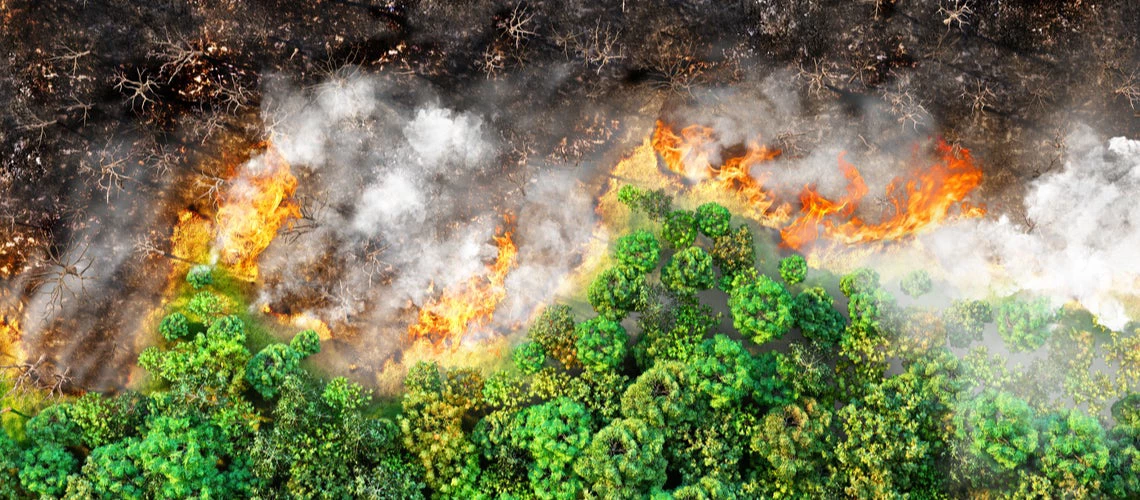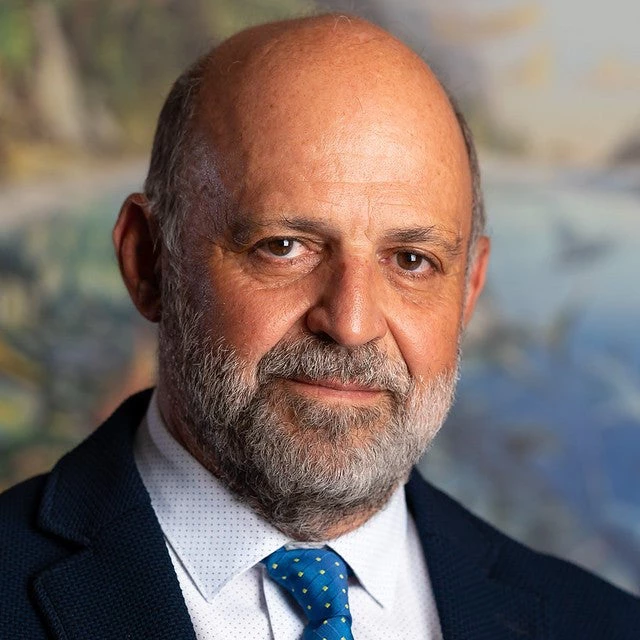 Fires, hurricanes, and the pandemic reflect the human-caused environmental damage that will keep compounding unless we act together to lighten our impact on the planet. 3D Illustration: © studiovin/Shutterstock
Fires, hurricanes, and the pandemic reflect the human-caused environmental damage that will keep compounding unless we act together to lighten our impact on the planet. 3D Illustration: © studiovin/Shutterstock
The largest tropical wetland on the planet is ablaze. The hurricane season has been so busy the World Meteorological Organization has run out of names for only the second time in history. A pandemic has killed 1 million of us and dealt the global economy a hammer blow.
These overlapping crises are not just hallmarks of a bad year. They reflect the human-caused environmental damage that will keep compounding in the epoch dubbed the Anthropocene, where humanity’s impact on the planet dominates all else.
While geologists are still debating when exactly this period began, most believe it started around the time I was born 60 years ago. It was then that nuclear debris, mercury pollution, and other fingerprints of humanity embedded themselves in the rock, ending the nearly 11,000-year Holocene period we grew up learning about.
Why does this matter? Our impact on the planet has created a drastically different world and an expensive one to plan for a future in.
The Australian bushfires that started last year have had taken an economic toll estimated at $110 billion, and the 2020 blazes in Siberia are more extensive than those of 2019, which Russia’s forestry authority said cost more than $100 billion. The wildfires still raging up and down North America’s west coast may cause $20 billion in direct damages alone.
While humans are not always directly responsible for starting these conflagrations, the record heat waves and droughts caused by our impact on the planet make them burn longer, hotter, and over greater areas. A study from Royal Netherlands Meteorological Institute said the record Arctic temperatures that fed the Siberian forest fires were made 600 times more likely because of climate change.
Right now, governments everywhere are preparing to pour trillions of dollars into initiatives to help their economies recover from the impact of COVID-19. These efforts offer a once-in-a-lifetime chance to scale up support for critically needed solutions to help our forests, lands, and oceans sequester carbon and protect habitats.
The risk is that, in their haste to reverse the worst global economic downturn since the Second World War, governments will turn to quick fixes that will accelerate environmental destruction just when the world can least afford it. That is why it is critical to act now—before major expenditures are channelled into the stimulation of sectors that will bring more carbon emissions, more land use change, more soil erosion, and more deforestation.
Failure to factor the environment into decision-making risks worsening three of what the World Economic Forum ranks as the top five threats to the global economy: climate action failure; biodiversity loss; and extreme weather. Yet today, government support for sectors that harm the environment dwarfs spending on efforts to fix that damage.
“Once governments accept that they must redirect capital toward sustainable activity, they will find there are a host of possible initiatives that deliver economic as well as ecological benefits.”
According to the Paulson Institute, the Nature Conservancy, and Cornell University, annual global spending on biodiversity conservation is between $124 billion and $143 billion—a fraction of what is required, with an annual shortfall of $598 billion to $824 billion.
This may sound like a wide gulf to bridge, but it is possible. Roughly half could be closed without new investment, the report said, by cutting subsidies to ecologically damaging sectors. Governments now spend almost $542 billion each year on agricultural, fisheries, and forestry subsidies alone. Energy and mining receive billions more.
Once governments accept that they must redirect capital toward sustainable activity, they will find there are a host of possible initiatives that deliver economic as well as ecological benefits. In Costa Rica, we were able to double the size of the forest even as we tripled the size of the economy, by going from negative incentives toward positive ones.
Our adaptation to evolving COVID-19 restrictions has shown us that society is capable of rapid and radical change when the stakes are high, while the sudden clearing of skies over ordinarily pollution-choked cities fostered greater awareness of the consequences of unending consumption growth. Investors, too, increasingly see the environment as a significant economic risk.
This change in sentiment offers us a real chance to make genuine progress on biodiversity and climate change mitigation, driven by a recognition that shifting financial and policy support toward preserving the environment is in our economic self-interest.
There has been much talk in the media about how the pandemic will affect the health and economic well-being of our children and the children of tomorrow. We cannot forget in the urgency of the present crisis that the decisions we make about the environment in the wake of COVID-19 are critical to ensuring they have both in decades to come.
And surely an investment in their future is the soundest investment of all.


Join the Conversation